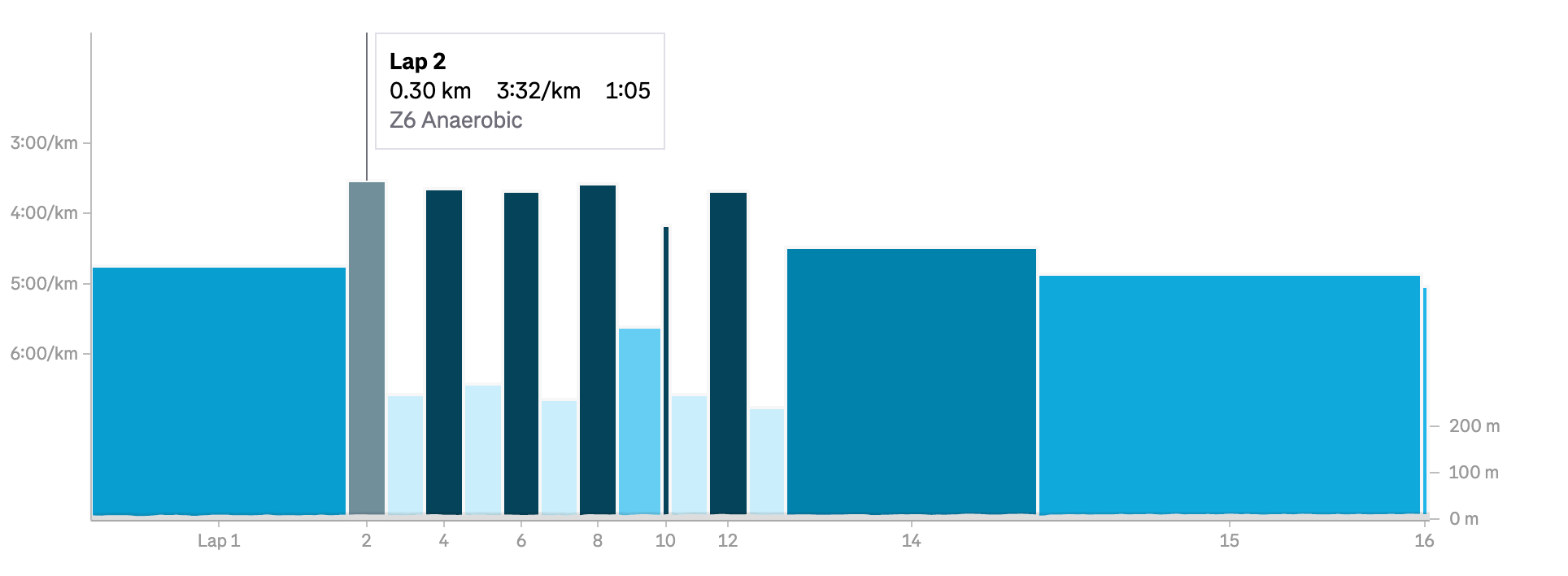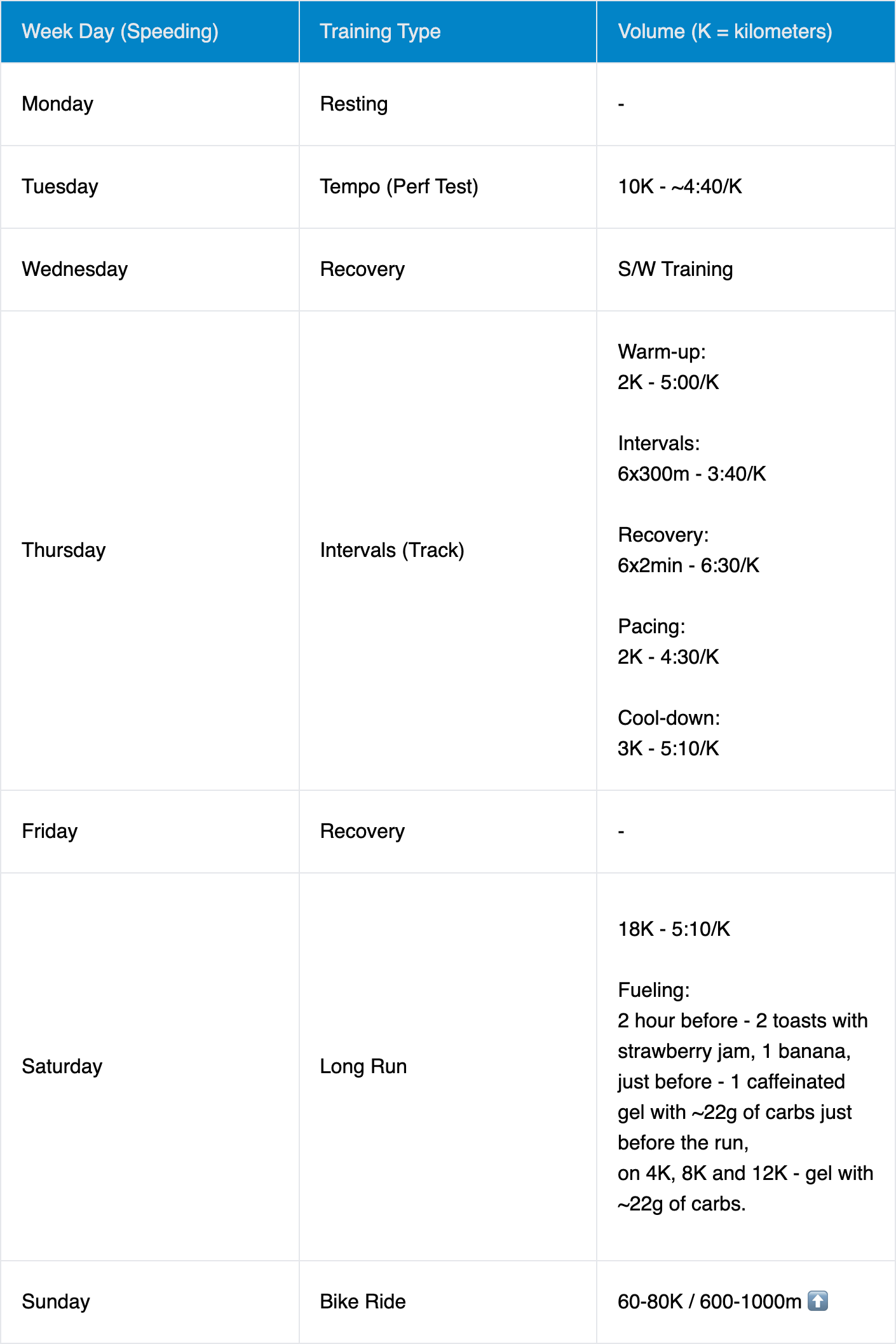Half Marathon 2-Months Training Block: Weeks 5-7 (Speeding Up)
The ultimate plan to build fitness before your next half marathon.
Let me start from the end. Why, you ask? Because I’m entering the final (eighth) week of my training block, which is devoted entirely to regeneration - giving my body the rest it needs while staying active, right before my first race of the year. This final phase is essentially a checkpoint, and you can apply the same concept to any event. For me, that event is the Seville Half Marathon, one of five races I have planned this year (read more in the about section).
This last week is known as the “taper”, and I’ll dive deeper into what that entails in a separate post. For now, let’s focus on what happened during weeks five through seven. For that I’ll describe only noticeable changes that I’ve introduced to the general flow of trainings. However, the structure and what I’m doing during the certain day of the training week it’s almost the same. Finally, at the end I will show you that the plan went very well and succeeded… well, at some point.
Tuesday 🔥
Thursdays remain my power and efficiency test days. Early in the mornings, I focus on tempo runs to gauge my best paces, pushing close to my limit with a 10K at or around threshold pace. Overall, I’ve seen an uptick in performance - but there’s one important detail.
Over the Christmas break, my family and I spent a little over a week in Poland. I had ambitious plans to keep up my training and maintain consistency, which I did - however, the poor air quality and pollution there took a toll on my respiratory capacity. Coming from near-ocean conditions in Portugal, where clean air naturally boosts lung function, the contrast was striking. I struggled to hold the same paces I had before traveling, and even after returning to Portugal, it took me more than a week to rebuild my oxygen capacity. I’m entering this final block with (I believe) the same capabilities as before the trip.
I understand not everyone has access to near-ideal training conditions. It can be tougher to work out in colder climates where people burn all sorts of fuels for heat or in industrial areas with heavy pollution. I assumed that putting my lungs to the test in harsher conditions might actually improve performance, but that turned out to be a really wrong assumption.
Thursday 🏟️
Track (intervals) day. Throughout this training block (excluding my trip to Poland, when I wasn’t doing intervals), I’ve stuck to the same interval session structure with one significant adjustment - an idea suggested by AI, as I consulting my progress with it. I added an additional high-intensity interval block, increasing from five to six repetitions, and pushed harder during the post-speed 2K segment.
Although I shortened the anaerobic interval distance from 400m to 300m, I could still sustain a 3:30–3:40 pace. The following section aimed for a 4:30 pace. Here’s how it looks in the diagram.

Saturday ⏰
The final adjustment for this training block involves my Saturday long runs, which stayed the same overall. However, for the last two, I treated them as “dress rehearsals” for race day. What does that mean? I wanted to replicate the entire routine I plan to follow on race day.
I woke up at around 8 a.m. after a solid eight hours of sleep. On the race day it might be a different time for all of us. Then, I made a toast with jam, smashed a banana, and had a glass of orange juice (great carb source), waiting about two hours before heading out. Just before 10 a.m., I prepared my running bottle with electrolytes and carbs, ate one gel, packed three more in my tights pocket, laced up my race-day shoes and went running… of course.
The goal was to maintain a pace close to my target race pace throughout the session. I covered just over 19 kilometers1 (12 miles) - increasing my distance each week - and on this final run, I broke all my personal records so far! I was thrilled. The progress felt so good that I’m now aiming for a 1:40 finish time, instead of 1:45.
After that, the following week was all about rest and final preparations for my first race of the season: my first of five half marathons in Seville. I can’t wait to share the outcome and my experience with you!
Final Notes
The rest of my schedule stayed largely the same - rest days were dedicated to recovery, and cross-training activities like cycling took place as planned. In upcoming posts, I’ll outline what the final “taper” week entails and also share details of my eating routine during this phase. Since I aimed to drop some weight (and succeeded), it should be a valuable addition to the overall picture.
So this is like the final structure of the 5-7 weeks looked like.
That’s it. Thanks for reading. Let’s go!
Here you can read about the final execution of this plan & preparations block.
There’s a bit of a time-honored superstition in the running community about never covering the full race distance in training - like running 19K instead of 21K before a half marathon, or 38K rather than 42K leading up to a marathon. Some people say it’s bad luck or that it mentally “wastes” your peak effort before the big day. Others argue that it’s just practical: running the entire distance too often during training increases the risk of injury, and it’s better to arrive at the starting line feeling fresh and strong.
From a physiological standpoint, leaving a few kilometers out of your long runs can help with recovery and reduce overtraining. Mentally, it can also build anticipation. If you’ve never quite run the full distance in training, you’re more likely to push harder during the race, confident you still have that extra gear for the final few kilometers.
Whether it’s truly a superstition or simply good running sense, many athletes swear by this approach. So if you find yourself stopping short of 21K or 42K, know you’re in good company - and you just might line up on race day with that perfect balance of excitement and readiness.



